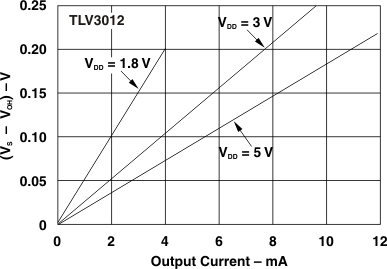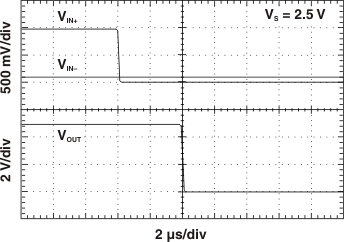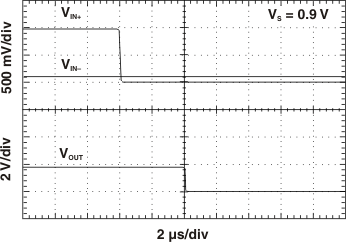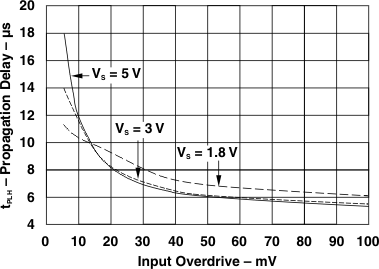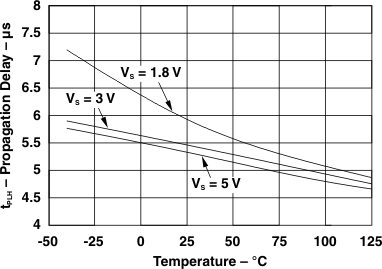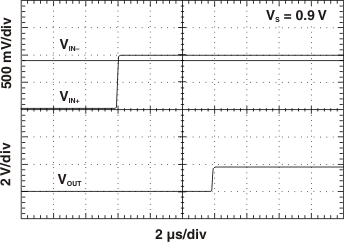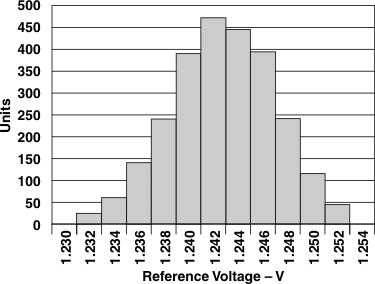SBOS300C february 2004 – april 2023 TLV3011 , TLV3011B , TLV3012 , TLV3012B
PRODUCTION DATA
- 1 Features
- 2 Applications
- 3 Description
- 4 Revision History
- 5 Pin Configuration and Functions
-
6 Specifications
- 6.1 Absolute Maximum Ratings- TLV3011 and TLV3012
- 6.2 Absolute Maximum Ratings - TLV3011B and TLV3012B
- 6.3 ESD Ratings
- 6.4 Thermal Information - TLV3011 and TLV3012
- 6.5 Thermal Information- TLV3011B and TLV3012B
- 6.6 Recommended Operating Conditions
- 6.7 Electrical Characteristics - TLV3011 and TLV3012
- 6.8 Switching Characteristics - TLV3011 and TLV3012
- 6.9 Electrical Characteristics - TLV3011B and TLV3012B
- 6.10 Switching Characteristics - TLV3011B and TLV3012B
- 7 Typical Characteristics - TLV3011 and TLV3012
- 8 Typical Characteristics - TLV3011B and TLV3012B
- 9 Detailed Description
- 10Application and Implementation
- 11Device and Documentation Support
- 12Mechanical, Packaging, and Orderable Information
Package Options
Mechanical Data (Package|Pins)
Thermal pad, mechanical data (Package|Pins)
Orderable Information
7 Typical Characteristics - TLV3011 and TLV3012
At TA = 25°C, VS = 1.8 V to 5.5 V, and Input Overdrive = 100 mV, unless otherwise noted.


